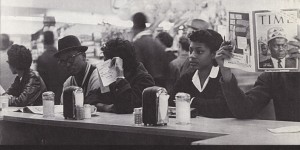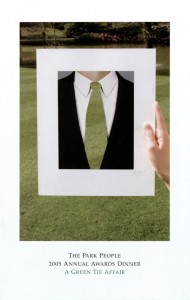
 The latest exhibit featuring materials from Special Collections opens today in the M.D. Anderson Library. Houston’s Environmental Past highlights the work of Houston environmental activists across four themes — Floodplain/watershed management, wilderness recreation, green space protection, and urban planning. While exploring Houston’s environmental past, the history of Houston’s infrastructure and business development is also addressed.
The latest exhibit featuring materials from Special Collections opens today in the M.D. Anderson Library. Houston’s Environmental Past highlights the work of Houston environmental activists across four themes — Floodplain/watershed management, wilderness recreation, green space protection, and urban planning. While exploring Houston’s environmental past, the history of Houston’s infrastructure and business development is also addressed.
The exhibit is open to the public during the library’s regular operating hours and runs from March 25 through September 20. You can find it on the first floor, between the red and brown elevators. For more information, contact Dr. Teresa (Terry) Tomkins-Walsh.
During the University’s recognition of African American History Month, students and visitors might wish to learn more about the Civil Rights Movement as it took place on a local level here in Houston. A good place to start is with the Thomas R. Cole Desegregation Papers in Special Collections.
 Thomas R. Cole was Creator and Executive Producer of a 1997 film documentary called The Strange Demise of Jim Crow, which traces the unique desegregation process and civil rights struggles that occurred in Houston in the 1950s-1960s. Part of the Houston History Archives, the Cole collection consists of 19 boxes of very rich material, including drafts of film scripts, topical files on significant segregation issues, film project proposals, correspondence, publicity material, and a photocopy of Negro Politics and the Rise of the Civil Rights Movement in Houston, Texas (1968), a dissertation by Franklin Chandler Davidson.
Thomas R. Cole was Creator and Executive Producer of a 1997 film documentary called The Strange Demise of Jim Crow, which traces the unique desegregation process and civil rights struggles that occurred in Houston in the 1950s-1960s. Part of the Houston History Archives, the Cole collection consists of 19 boxes of very rich material, including drafts of film scripts, topical files on significant segregation issues, film project proposals, correspondence, publicity material, and a photocopy of Negro Politics and the Rise of the Civil Rights Movement in Houston, Texas (1968), a dissertation by Franklin Chandler Davidson.
The 57-minute DVD The Strange Demise of Jim Crow is available for checkout in the main library and for viewing in the Special Collections Reading Room.
For more information about what is contained in the Thomas R. Cole Desegregation Papers, be sure to take a look at the finding aid. The original materials can be viewed in the Special Collections Reading Room.
The finding aid for the Terry Tarlton Hershey Papers is now available online. The materials described in this finding aid include biographical information on the environmental activist and materials on the local groups she supported. The collection also includes background information on groups who have solitcited or recieved philanthropic support from Hershey or the Hershey Foundation.
Terry Hershey became involved in environmental activism in the Houston area in the 1960s, when she joined the Buffalo Bayou Preservation Association (later the Bayou Preservation Association). Hershey was outraged by the condition of the bayou and Harris County Flood Control District’s plan to re-route the bayou without public notification. She eventually testified before the House Appropriations Sub-Committee, and this testimony led to a halt to the work on Buffalo Bayou.
Hershey continues to be a central figure in Houston’s environmental activism. Other organizations dealt with in the collection include the Citizens’ Environmental Coalition, the Houston Audubon Society, the Houston Museum of Natural Science, and Urban Harvest. Special Collections also holds archival records from the Citizens’ Enivronmental Coalition and the Bayou Preservation Association.
The original materials are available for use by the public in the Special Collections Reading Room.
Our latest digital collection, and the first from the Houston History Archives, is now available in the UH Digital Library. The Park People Annual Awards Dinner Invitations includes invitations for events that reflect the mission championed by The Park People: to preserve and expand green space in Houston.
The awards began as a simple affair in 1981, and invitations from from 1992-2005 are included in this digital collection. These creative invitations reflect not only The Park People’s success but also the spirit of woodsy and easy elegance that characterized the organization.
The Park People emerged in 1978 as an organization devoted to advocacy for parks and green space in the Houston area. Following the environmental protest organizations of the 1960s, The Park People became a model for collaboration and cooperation by inviting government, business interests, non-profit organizations, and private citizens to join the effort to preserve and expand Houston’s green spaces.
The Park People relied on multiple avenues of community outreach to carry their message and expand support, and the awards ceremony became an anticipated avenue of outreach. An innovation in 1981, the awards event grew into a gala affair welcomed by those who spearheaded community-wide efforts to promote parks and green space.
These invitations are part of the The Park People Records, which can be viewed in the Special Collections Reading Room during normal business hours.
For more information about The Park People Records and the invitations, contact Dr. Terry Tomkins-Walsh.
In 1987, Houstonian Jon Schwartz created a documentary film, This is Our Home, It Is Not For Sale, that traced the history of Houston’s Riverside neighborhood from land grant to inner city neighborhood, and Special Collections holds a collection of records that covers the full scope of the production of the documentary film.
The finding aid for the This is Our Home, It is Not For Sale Film Collection is now available in Archon. The finding aid describes the materials in the collection, which cover fundraising activities, releases and contracts, insurance, research materials, production notes and logs, film screenings and festivals, photographs, and posters.
The documentary tells tells the story of Riverside through interviews, photos, and home movies. Informally known as the Jewish River Oaks, Riverside became an idyllic neighborhood close to downtown. It was an all-white neighborhood until 1952 when the first black family moved in, and white flight followed. Real estate agents working house-to-house encouraged owners to sell, but many residents resisted the inclination to move and posted yard signs stating “This is Our Home, It’s Not for Sale.” Transformation became inevitable for a constellation of reasons. Intrusions into the neighborhood included Highway 288 and the Harris County Psychiatric Center. By the conclusion of the time period covered in the film (mid-1980s), Riverside was a multi-ethnic neighborhood, combining characteristics of a peaceful wooded residential area with the conflicts of an integrated urban neighborhood.
The materials in this collection, along with a copy of the film, can be viewed in the Special Collections Reading Room.
